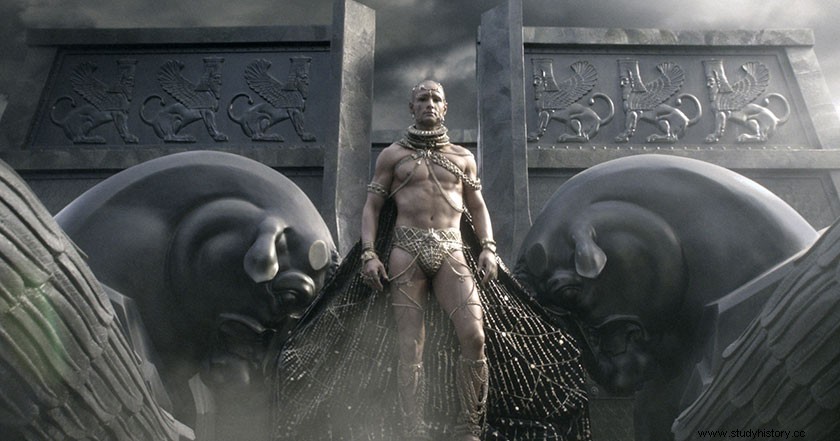
It is evident that the figure of Xerxes presented to us cartoonist Frank Miller, and filmmaker Zack Snyder is far from reality. Especially the image of him, since the fourth king of the Achaemenid dynasty Rather he seems to have come from some African kingdom than to be a descendant of the Iranians. But what we can't deny him is his great dose of creativity, to convey aspects of history, which favor the approach of this discipline to the general public.
That aspect must be taken advantage of by those of us who try to divulge history, to present important episodes of it. As in the case that concerns us today that helps us to go to the historic region of Persia, specifically to the year 559 BC, to learn about the birth of the Achaemenid dynasty , without a doubt one of those that will give the region the greatest splendor throughout its history. In the little more than two centuries that he reigned, he managed to expand the Persian territories, from the natural border of the Indus River to the Egyptian Empire. Without forgetting the territories of Asia Minor where they will meet his great historical enemy, the Greeks, with whom they will star in the famous medical wars, which the aforementioned tell us about, in their famous "300".
There are many aspects that we could highlight about the Achaemenid Persians. Among others, its spectacular cities such as Persepolis, destroyed by the great Alexander the Great, the Persian Royal Road that linked the capital Susa with Sardes a few kilometers from the Aegean Sea, or finally the famous army of the "ten thousand immortals ”.
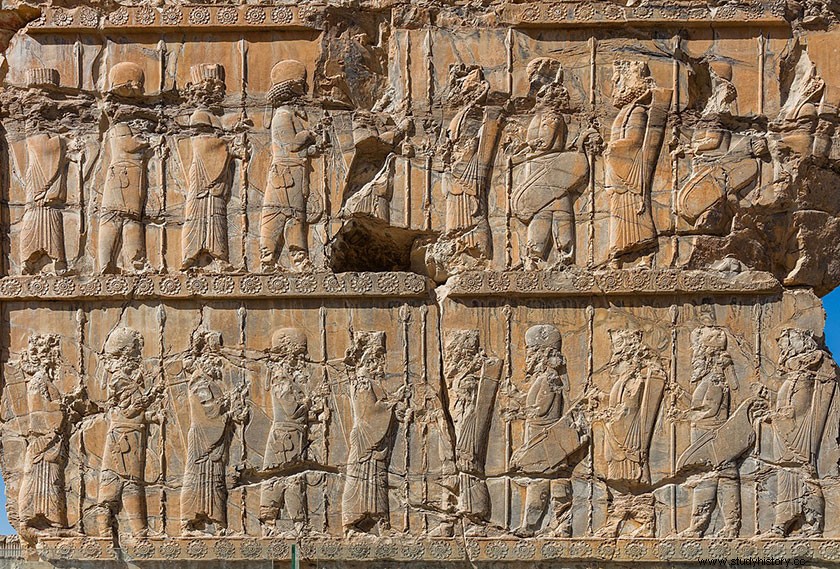
The ten thousand immortals in Persepolis, symbol of the Achaemenid dynasty
But we are going to focus on their kings, the true protagonists of this Persian people. Without a doubt they became one of the most absolutist monarchies that history has given, their power emanated directly from the Persian God Ahura Mazda. Therefore, the royal figure did not share any responsibility with his subjects, the king, apart from holding the highest echelon of political power, became the supreme judge, the divine laws were embodied on earth by the king of the day. Without forgetting that he was the military leader and the model of courage to be imitated by all his soldiers.
His stories of him were related to us by the great Greek historians with Herodotus at the head. Through them we know aspects that can bring us closer to the omnipresent royal figure of the Achaemenid kings; no one could approach them if he did not require their presence, this aspect included their own wives or children. All the men and women of the kingdom were its slaves, including the highest nobility, or the governors of the great cities under the rule of the Achaemenid dynasty, some as significant as Babylon itself. Not to mention that everyone was obliged to the act of "proskynesis", for which they had to kneel or bow in the presence of the monarch.
The Achaemenid dynasty had 12 kings, some of whom hardly ever sat on the throne. Others, on the other hand, were true protagonists of ancient history, today we are going to know the latter.
Cyrus II , (559-528 BC)
Known as the “Great” and evidently the first king of the Achaemenid dynasty. It is necessary to highlight that before the arrival of King Cyrus, the history of the Iranian territories is marked by the dispute between the Persians and the Medes. Ciro was Cambiases's son who married the daughter of the Medo king Astyages, so the newborn carried the royal blood of the two peoples in question. The coming to power of Cyrus II sails through the mists of legends, according to Herodotus, he was abandoned by his grandfather Astyages on the mountain, which is why years later Cyrus will take revenge by conquering the lands of the Medas to his own grandfather. the. This is how the Achaemenid Empire was born, which united the destinies of the Persians and the Medes.
After uniting both territories it was time to expand the newly born Empire, at this point we can think of the hackneyed phrase of; "What better defense than a good attack." Before the attempts of King Croesus of Lydia to reach the Achaemenid capital, Cyrus II ordered Sardes to besiege the capital of the Lydians, which fell in 546 BC. This was followed by the most important city of the fertile crescent, Babylon in 539 BC, and a multitude of territories in eastern Persia, less urbanized and therefore more difficult to pinpoint their process of conquest. Cyrus II met his death somewhere in the north of the Empire, repelling attacks from the nomadic people of the Massagetae.
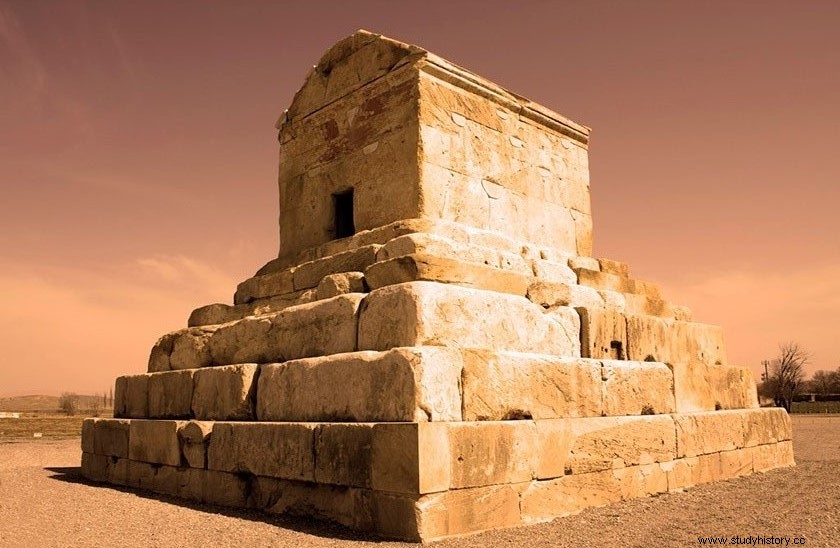
Tomb of Cyrus II in Pasagarda
You changed II , (528-523)
Son of the above and regent in the city of Babylon. After ordering the body of his father to be found to be buried in the Persian capital of Pasagarda, he undertook the conquest of the once great Egyptian Empire. He first became strong in the coastal territories, from where the Phoenicians had dominated the Mediterranean Sea. There they built the first Persian fleet, to be able to attack the Egyptian territories by land and sea. The conquest process lasted about four years, until after taking the city of Menfins in 525 BC, he was proclaimed pharaoh, thus initiating the XXVII Dynasty.
After reaching even the territories of present-day Ethiopia, or setting his sights on Carthage to the west, he was forced to return to Persia. The news that came from there spoke of Gautama, a Medo priest, who had become a king supplanting the figure of Cambiases's brother. In this return, either by accident or by his suicide, the Persian king met his death.
Dario I (521-485 BC)
The great king of the Achaemenid dynasty along with Cyrus II, despite the fact that his arrival in power generates extensive discussions among historians, due to the figure of his predecessor . If for some Gautama was an impostor, for others he was Bardiya, in this case the brother of Cambiases II, and therefore the true heir to the Empire. The first of the options is told to us by the Behistún inscription, ordered to be built by Darío I himself, and which you can learn a little better about in the following article:cuneiform-writing
The defenders of the second option rely on the events after Darius I came to power, having to repress the revolts caused in several of the regions of the Empire in disagreement with said arrival.
But he will also be remembered as the king who turned all those lands conquered by his predecessors into a true Empire. After quelling the revolts, he devoted himself to traveling the vast borders of the Empire, to secure them and in the process organize its true political structure. He divided it into 20 satrapies, at the command of which he placed a governor or satrap with all the powers, but of course subject to the king of kings. He also founded the new capital in the territories of the ancient Persian people, Persepolis, and the previously named Persian Royal Road, according to Herodotus the great engine of the Empire.
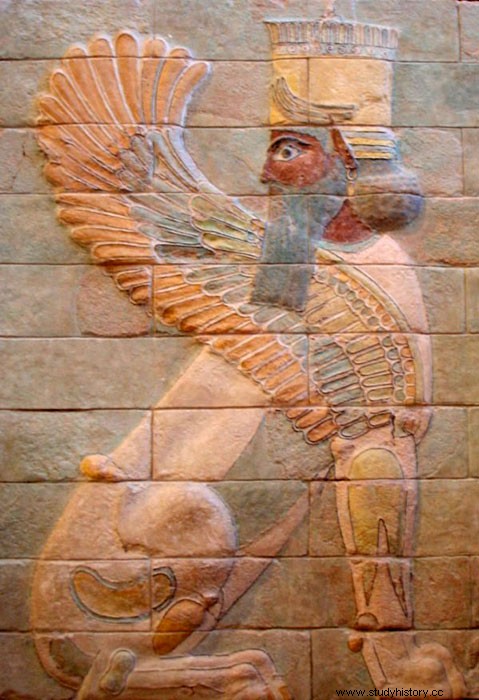
Dario I
His named journey through the borders took him to the north of Greece, where with little opposition he conquered the territories of Macedonia, now yes, the confrontation would be inevitable. As is well known, Greece was not an Empire, it did not even act together, the city-states disputed the territories in continuous wars, but the arrival of the Persian armies managed to bring together citizens who shared the same culture. Going back to Darius I, around the year 490 BC, he prepared the definitive assault on Greece, from the same Greek colonies in Asia Minor that were subject to the Achaemenid Empire. Then,
on a fleet of 600 ships, the Persians were conquering the Aegean islands on their approach to the continent, so the next step was to conquer Athens, the cradle of democracy and so far from the ideals of Darius I. The defeat at Marathon led them to their most humiliating retreat, the assault on the Greek city needed a larger army, something that Darius would not see, who died in 485 BC. due to a long illness.
Xerxes I. (485-465 BC.)
To begin the story, a new succession dispute between Xerxes, a direct descendant of Cyrus II the Great himself, and a half-brother of our protagonist Artobarzanes. Evidently resolved in favor of more "media" of the Achaemenid kings thanks to the extravagant figure that Hollywood has presented us with.
The conquest of Greece that his predecessor had left pending, focused the efforts of Xerxes I, this led to the internal revolts of two of the most important satrapies, Egypt and Babylon, which delayed the arrival of the Persian troops to the Hellenic territories. In the summer of the year 480 BC, everything was ready, the largest Persian army in history, with its king at the head, crossed the bridge built over the Dardanelles Strait, it had a base built with the ships themselves of the Persian fleet. By the way, according to Herodotus 2.5 million Persians, subtracting the exaggerations of the Greek genius about 250,000, even so a very remarkable number for the time, but that had a problem that will take its toll, its heterogeneity with members forced to come from all corners of the vast Empire.
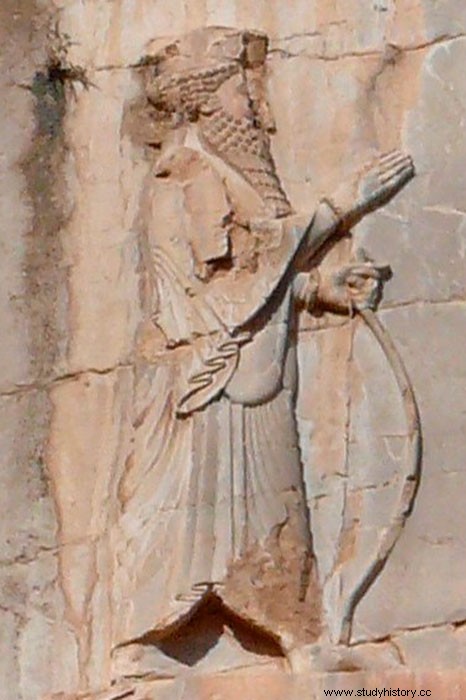
A more faithful image of Xerxes I
The first confrontation, the battle narrated by Frank Miller and Zack Snyder, which without counting them, was already one of the best known battles in history; Few defeats have had as much flavor of victory as what happened at the Pass of Thermopylae. Certainly the victory smiled at the men of Xerxes I, this was joined by the defeat at sea of the experienced Greek fleet. The result was the arrival of the Achaemenid Persians in the city of Athens, completely abandoned as the only form of defense against the Greeks. Subdued the great Greek city, the next step was to conquer the rest of the cities of the continent. Where the problems of the Persians will begin, two consecutive defeats in Plataea and Micala, without forgetting the humiliation that the reborn Greek ships subjected to the Persian fleet in Salamis. To this was added a new revolt in Babylon, at that time the economic heart of the Achaemenid Empire.
Xerxes I's decision changed the course of history between the Greeks and Persians. In short, he retraced his steps, to control Babylon, while the Greeks signed the agreement that would lead them to become owners of the eastern Mediterranean, the Delian League. On the other side, a Xerxes I, during the following fifteen years of mandate plunged into a thousand internal struggles, in the middle of one of them he was found murdered in his own palace.
From that moment on, the kings of the Achaemenid dynasty along with their Empire will begin a continuous debacle. Babylon, the commercial capital, plunged into the most complete of ruins, added to the paralysis of trade from the Empire to the Mediterranean in Greek hands, ended up emptying the imperial coffers. The internal revolts took place in all the satrapies, and unable to continue the fight against the Greeks, they signed peace in the year 449 BC.
On the other hand, it would be unfair to say that the Achaemenid dynasty ended here, up to eight more kings were protagonists, some tried to revive the Empire by destroying the Greeks. But instead of using a large army, it was through influencing the dispute that began between Athens and Sparta, in the so-called Peloponnesian wars. The truth is that they never had the leading role of the first four, the last of them Dario III, died in full flight after his defeats against Alexander the Great.
More info:
History of the Ancient World, Ana Mª Vázquez Hoys, Ed. Sanz y Torres, 2003
Brief history of the Persians, Jorge Pisa Sánchez, Ed. Nowtilus, 2011
Images:
commons.wikimedia
